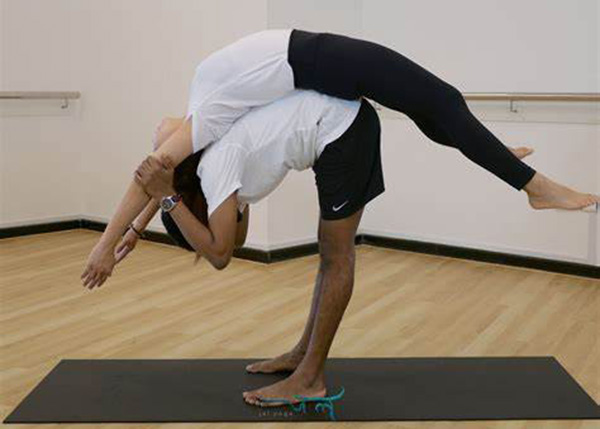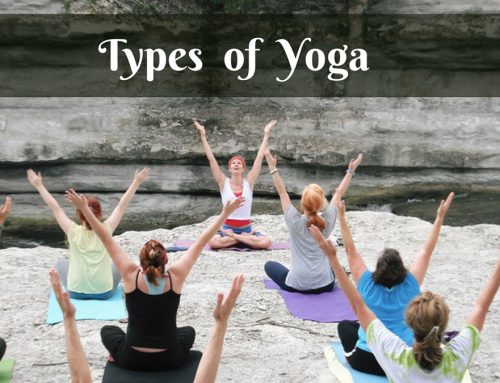Table of Contents
What Is Acroyoga?
Acroyoga is a combination of yoga and acrobatics. Acroyoga borrows some postures from yoga such as balance, breath, and meditation and blends those with acrobatics like skill and athleticism.
Acro Yoga is one of those yoga practice that requires a partner. Therefore, you may need to prepare yourself for playing, falling and creating trust and connection with your partner during the exercise. The most important thing in this practice is communication between the two participants. The key to practicing acro yoga postures safely is for two participants to make sure that there is communication and a deep bonding between them. There are two main reasons for you and your partner doing Acroyoga together on the mat which are therapeutic release and acrobatic fun.
There are mainly two types of Acroyoga practices: solar practices and lunar practices. Usually, solar practices are performed with the flyer being the most active while the base will be relatively passive. Lunar practices, however, often contain movements of Thai massage in which the flyer stays inactive and gets massage and support from the base.
How To Do Acroyoga Positions?
Here are some step-by-step guides of basic and foundational Acroyoga poses to help you improve your flexibility, strength and build trust with your partner before trying some advanced postures:
1. Reverse hand-to-hand push-ups
To perform this practice, it requires the base to lie on the ground with their knees straight up and soles of the feet on the floor. The flyer and the base should hold each other’s hands while the flyer’s fingers should point to the base’s head. Then the base should make a 45-degree angle to the ground while the flyer closes his or her hands. The two performers should keep this pose for a full breath cycle and then go back to their starting position. One key factor for this practice that should be remembered by the two performers is that in the hand-to-hand push-ups position, one participant’s hands should make a straight line from their shoulders to their partner’s shoulders.
2. Plank on plank
For this pose, the base should perform the plank position while the flyer will hold on to the base’s calves or the ankles. Next, the flyer will try to step on the base’s shoulders carefully with one foot at a time. If the flyer can not keep their body stable when they stand on the base’s shoulders, they can try to lock their toes to keep their body in balance when they are on the base’s shoulders.
3. Plank press
This practice requires the base to lie on the ground, bending their knees with a shoulder-width apart. Next the flyer should stand in front of the base’s feet. The base yogi will lift their legs to put their feet on the hips of the base and arms before their legs gradually straight up.
During this exercise, the flyer should engage their core and reach out their arms in order to form a T shape with their body.
The base should bend their knees so that they can have enough strength to support the flyer’s chest when they lean toward.
On the other hand, the flyer should bend down with their feet kept attached to the ground and their position remained stable and firm.
Then the flyer should gradually get back to the position where they start and this is regarded as one rep of this practice. This practice plays a significant part for the base yogi to get ready to handle the flyer’s weight before the participants move into more advanced postures.
4. Partner forward fold
This is a basic warm-up pose which helps build trust and teaches you how to lean on your partner for support. First, both the base and the flyer should sit on the ground back to back with their legs put in front of them. Then lock their arms and decide who should bend forward and who will bend backward. One participant should bend forward steadily and the other partner make the pose of a backbend. The depth of the backbend one partner may enjoy will depend largely on how deep the other partner bend.
What are the benefits of AcroYoga?
Like many other types of yoga practices, Acro Yoga also enjoys a wide range of benefits. Physically, Acro Yoga increases your flexibility, builds strength and deepens patience. Mentally, it helps performers develop trust, sharpen communication skills, and relieve stress.
Here is a list of the main benefits of practicing acrobatic yoga for beginners:
1. Enhances your concentration
To make sure that you and your partner will be safe during this practice, both of you have to be quite concentrated all the time. No matter which role you are playing in this exercise, you have to pay extra attention to every movement you are performing, which will greatly help you improve your concentration.
2. Deepens your relationship with your partner
There is little doubt that you have already formed a deep relationship with the person that you are choosing to perform Acroyoga. This practice will deepen your bond with him or her even further, because during the performance you put your trust and safety in the hands of your partner.
3. Helps you solve conflict
In our daily life, many people may get agitated easily either because of the fast-paced life or the personal anger control. Some may get into explosive arguments even though there is just a minor conflict. However, Acroyoga will help teach you how to solve a conflict reasonably or make you calm down and give it a second thought before you get more angry. Because you will learn the fact that you can not start yoga acrobatics with your partner when conflict is still there in your mind.
4. Improves your flexibility
One of the physical benefits of doing acrobatic yoga for beginners is improvement in flexibility. As with many other yoga practices, Acroyoga also involves the movement of your joints and muscles. When performing various Acroyoga postures, you will get the opportunity to exercise every major part of your body from head to toe. You can start acro yoga from the beginning stage and stretching your muscles if you find them not very flexible.
5. Teaches you to take decisions quickly
It requires you to hesitate less and make you decision of your next movement quickly when the whole of your partner is on you. And once you notice that something may make you lose your balance and fall, you will subconsciously make a quick decision to avoid any accident.
Conclusion
Acro Yoga is for everybody and it does not require you to be a gymnast or a skilled yoga performer to benefit from this practice. The purpose of Acro Yoga is to build trust, gain flexibility and relieve stress. Through practice, you will build the partnership and acquire the skills you need to reach new goals. With a partner and a custom yoga mat, you will have the world.










